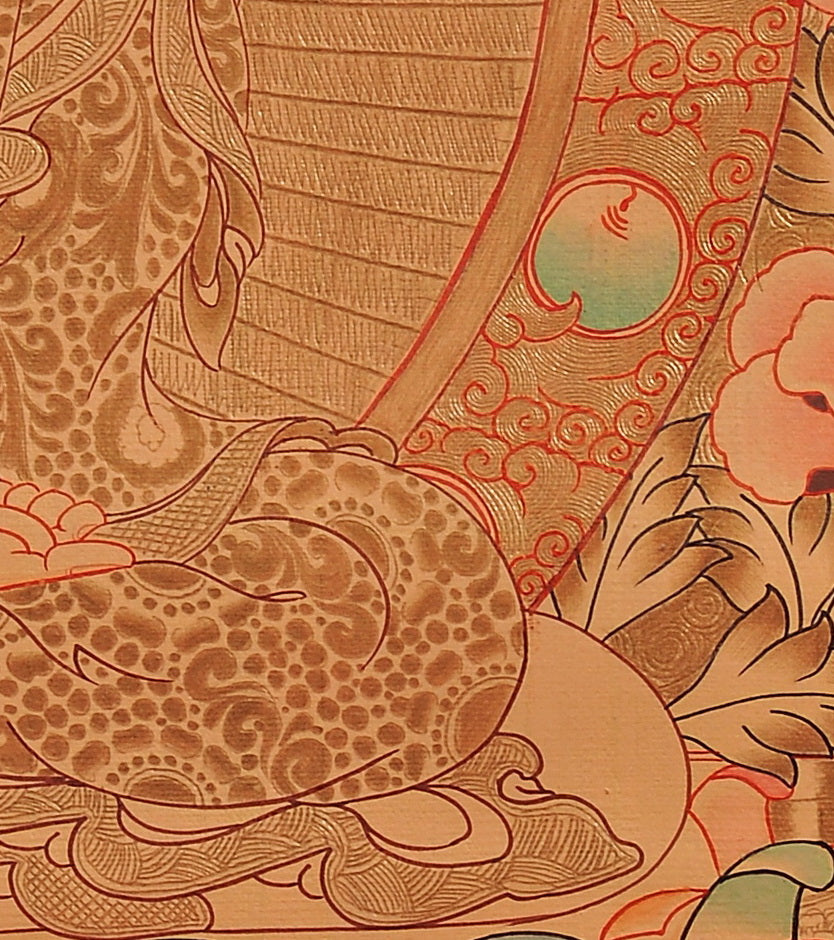SUMMER SPECIAL 25% OFF at Checkout
Buddha Shakyamuni Thangka
Buddha Shakyamuni Thangka
No se pudo cargar la disponibilidad de retiro
Hand painted Thangka of Shakyamuni Buddha in Bhumisparsha Mudra, with vegetable color and Gold throughout.
One of the most common and popular mudras(gesture or mark) which are found depicted in Buddha paintings & statues is the Bhumisparsha mudra, translated as the earth touching gesture. Buddha paintings with this mudra are commonly known as the "earth-witness". In Buddha paintings with the Bhumisparsha mudra, the Buddha, more specifically, the historical Shakyamuni Buddha is seen seated with his right hand as a pendant over the right knee reaching toward the ground with the palm inward while touching the lotus throne. In the meantime, the left hand can be seen with the palm upright in his lap. This gesture represents the moment of the Buddha's awakening as he claims the earth as the witness of his enlightenment. Just before he realized enlightenment, it is believed that the demon Mara tried to frighten him with the armies of demons and monsters including his daughters who tried to tempt him to get out of meditation under the Bodhi tree.
Siddhartha Gautama (Buddha), the founder of Buddhism, was born in the region now known as Nepal. Though there is no confirmed date of his birth, historians believe it to be around 560 B.C. It is understood that Gautama left his kingdom after becoming aware of human suffering, where he sought to attain enlightenment through meditation and thoughtful action. He began to preach his philosophy across parts of India, where he gained devout followers and eventually established the first sangha, Buddhist community of monks.






